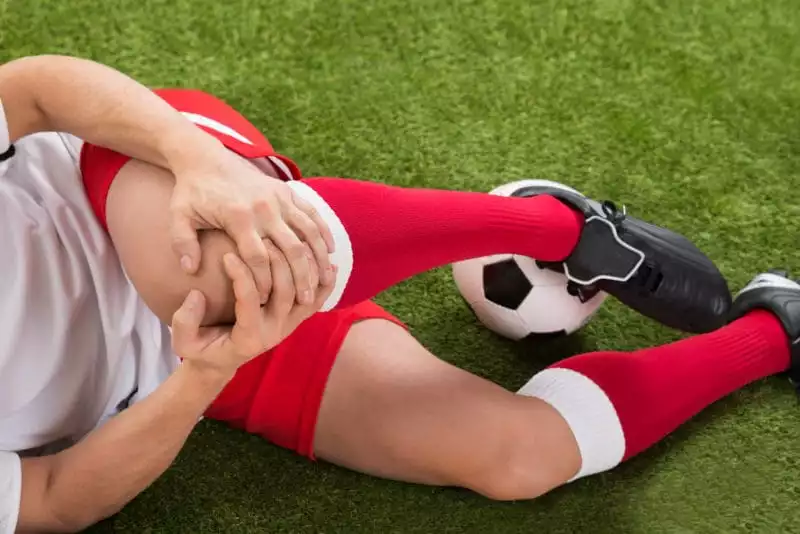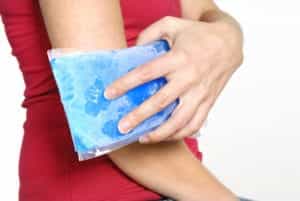
With every level of sports comes the risk for injury. The harder you play and compete, the more likely you are to experience an eventual accident. Injuries in the middle of competition season can be incredibly disheartening; no one likes to hear the news that they may have to “sit one out”. That’s why many competitive athletes push through pain and warning signs, hiding the sports injury and competing anyway. Unfortunately, this is incredibly risky as it can lead to permanent disability or repeated injuries that take much longer to heal.
When you experience a sports injury, it’s best to take a step back and seek medical attention. However, there’s plenty you can do to heal your injury at home, too. From protection to wraps and even just plain rest, these sports injury treatments help you manage pain and mobility issues so you can get back on your feet and ready to compete faster.
The PRICE Method
Almost anything with an acronym, especially a catchy one, is important or useful. PRICE stands for:
- Protect
- Rest
- Ice
- Compression
- Elevation
These are the most critical elements of any sports injury recovery program, be it a broken leg or just a sprained ankle. Even post-surgical intervention injury care follows a similar methodology. It just works!
Protection
One of the first things you need to do when injured is to protect the wound, if any exists. Using bandages, wraps, and splints to cover and stabilize the wound allows it to heal properly and prevent any further harm while you make your way to medical help. Use wound-safe disinfectants and antibiotics to cleanse open wounds, but avoid anything harsh like rubbing alcohol; not only is it painful, it can damage healthy flesh, too.
For sprains and broken bones, carefully arrange the limb in a splint until you can get a cast or sling. It is important not to attempt to adjust or align the limb yourself; just keep it stable and in place in whatever way is possible. If you have a broken finger or toe, you can gently tape the broken extremity to a neighbor.
Providing initial treatment to the wound is your main priority. The next step is to assess the injury and determine whether or not you need to see a doctor. Cuts, scrapes, and sprains will heal on their own, but anything more serious than that requires medical intervention.
Rest
Once you’ve treated your injury and acquired the remaining materials for a speedy recovery, and/or you’ve seen the doctor, it’s time to rest — both the injury and yourself. Use the injured area as little as possible and get as much sleep as you can.
It’s difficult to go from a rigorous practice and exercise schedule to lounging around while your body heals. But this is exactly what you need! After an injury, most (if not all) of your available energy gets diverted towards the healing process, and that makes you more susceptible to further injuries, too. Attempting to go straight back to your normal routine will almost certainly worsen your injury or cause further damage.
You may find yourself sleepier than normal if you experience a serious injury like a break or a bad sprain. This, too, is fairly normal. The body seeks sleep when it needs to repair, so give yourself the space to rest and heal in all ways.
You can still keep in shape through other means. For example, if you have an arm injury you could still walk or jog. Take the opportunity to experiment and discover new training techniques that don’t include the wounded part of your body. The key is to not overexert yourself while you have an injury.
Ice
Ice is nothing new to the world of medicine; in fact, humans have used it for injuries for centuries. It’s cheap, readily available, and most importantly effective at reducing swelling and pain after injuries.
Prevention is easiest here. Keep a few ice packs readily frozen in the freezer. When you experience a sports injury, apply ice to the area for the first 24 to 48 hours to reduce swelling and relieve pain. After this time period, heat is often better than ice.
You’ll get the most out of cold compresses by applying it off and on throughout the day. First, protect your skin from blistering and numbness by putting a thin cloth over the wound. Hold the ice pack on the wound for 10 to 15 minutes at a time. Remove it and allow the skin to warm back up for around 45 minutes.
Unless the injury contains a wound, is bleeding, or contains broken bones that have pierced the skin, it’s best to apply cold compresses immediately after washing and sterilizing the area. Repeat this process for the next four or five hours. Then, reduce applications to four times each day for a couple of days. Swap from ice packs to heat treatments afterwards using the same techniques and schedule.
Compression
Excessive swelling will keep your sports injury from healing properly. Ice packs help with this, but sometimes it isn’t enough. Applying gentle compressive pressure to the area improves circulation and also encourages fluid movement, speeding healing.
If the injury is accessible and on a limb, follow these guidelines to gently wrap it with elastic bandages. The wrap should be snug, but not so constricting as to cause a loss of feeling or sensation. Loosen the bandage every few hours if you experience additional swelling.
Swelling that exceeds the skin’s ability to compensate, causing cracks or severe bruising, may indicate a large hematoma is present. See a doctor before using pressure on the area.
Don’t use elastic bandages on torso, face, neck, or chest wounds without a doctor’s assistance. Not only will it be very uncomfortable, but you may place undue pressure on internal organs or arteries, too.
If the injury or wound is an awkward position, you can use other objects to apply pressure. Sometimes an ice pack is enough pressure. A sterile bandage or gauze pad also works. Pressure should always be comforting; if it causes numbness or discomfort, or restarts bleeding, stop and leave the injury alone.
Elevation
Inflammation and swelling are just a fact of life with sports injuries, but that doesn’t mean you have to take them lying down (unless, of course, you hurt your back). You can prevent further swelling and even reduce pain by elevating the injury above your heart. Gravity will cause blood and other fluids to drain away from the target area, taking away lymph fluid and white blood cells. Though this does cause the heart to work harder, the increased circulation effort can speed healing, too.
Prop your injury up on a pillow or foot rest,. The best position is at a height slightly above your heart, but even slight elevation will do.
Other Sports Injury Treatment Options
PRICE is by far the best entry-level way to address post-sport-injury pain and swelling. But it isn’t always enough, especially if the sports injury is severe or long-term. If you’re struggling, but have been advised by your doctor that time and rest is what’s needed most, these alternative treatment methods may help.
Nonsteroidal Anti-Inflammatory Drugs
Non-steroidal anti-inflammatory drugs (NSAIDs), like Aspirin and Ibuprofen, reduce inflammation, swelling, and pain in the body by blocking certain prostaglandins in the brain and causing mild vasoconstriction. They’re also relatively benign in terms of side effects, though most are contraindicated in patients with high blood pressure or bleeding disorders. Some, particularly Naproxen, may also cause stomach pain if taken without food.
If you can’t take NSAIDs, or if you’re treating a child, Tylenol (acetaminophen) is often the safer choice. It will relieve pain, but won’t reduce swelling. Note that children under the age of 12 should never be given Aspirin or drugs containing acetylsalicylic acid due to an increased risk of Reye’s Syndrome.
Light Exercise
Maintaining muscle tone during recovery is complicated, but you can prevent decompensation with gentle, injury-appropriate exercise during and after the healing process. Be sure to ask your doctor for examples of exercises you can use to stay limber and supple, even while healing.
Some light exercises are broadly suitable with slight modification. Use gentle stretches, even while sitting in place, to boost circulation. Exercise other limbs from a sitting position or use a stationary bike if your injury allows for it. Light exercises improves healing in most mild to moderate sports injuries.
Scar tissue forms as your injured area heals. Eventually this scar tissue will shrink as the damaged tissues mend together again. This causes the area to stiffen which reduces mobility and makes it susceptible to re-injury. If you find your injury or limb stiff, seek advice from a sports medicine specialist. He or she can help you to reduce the stiffness without causing further damage, either through bracing or other hands-on treatment protocols.
Read More:

 info@burtsrx.com
info@burtsrx.com
